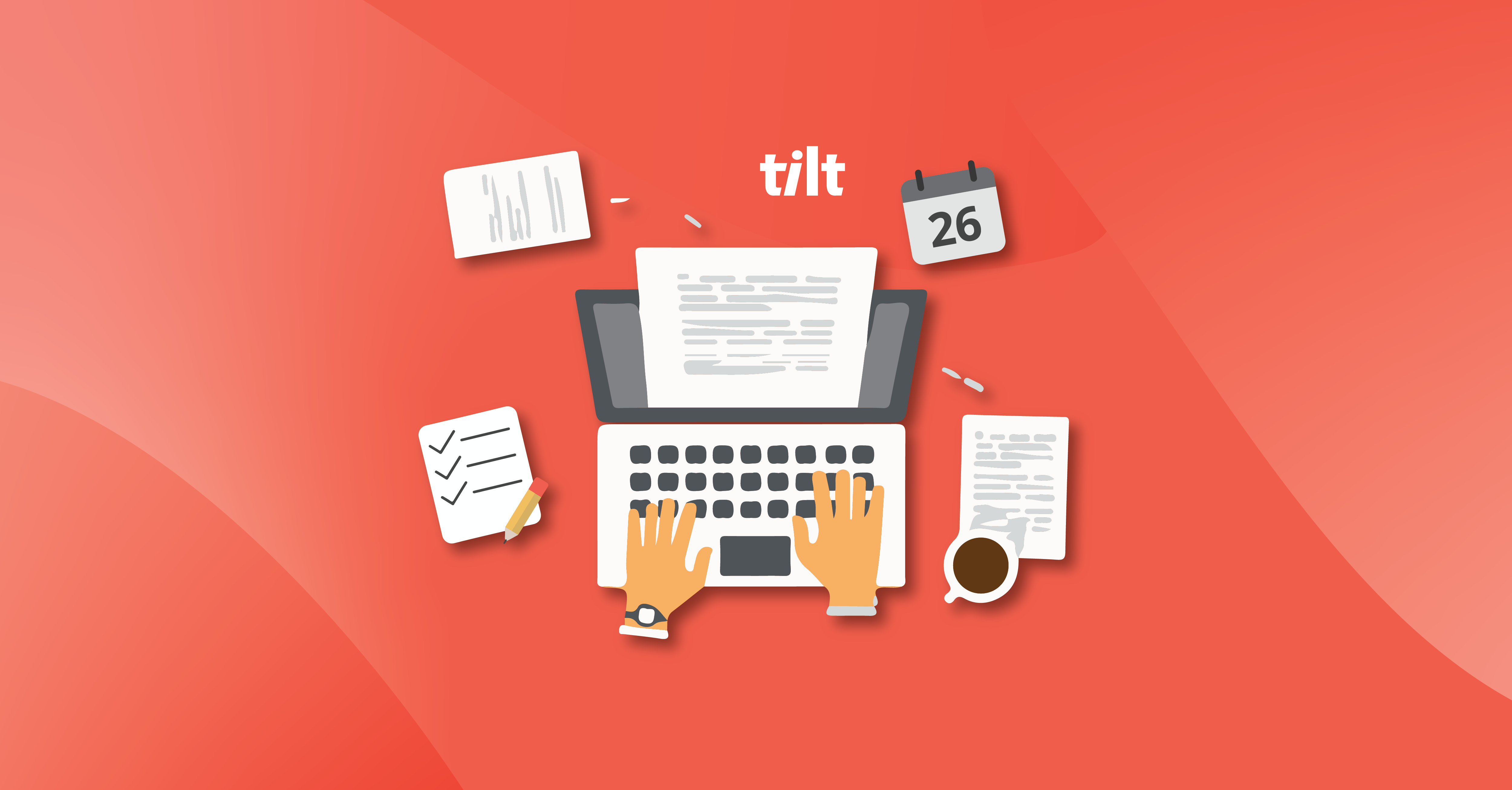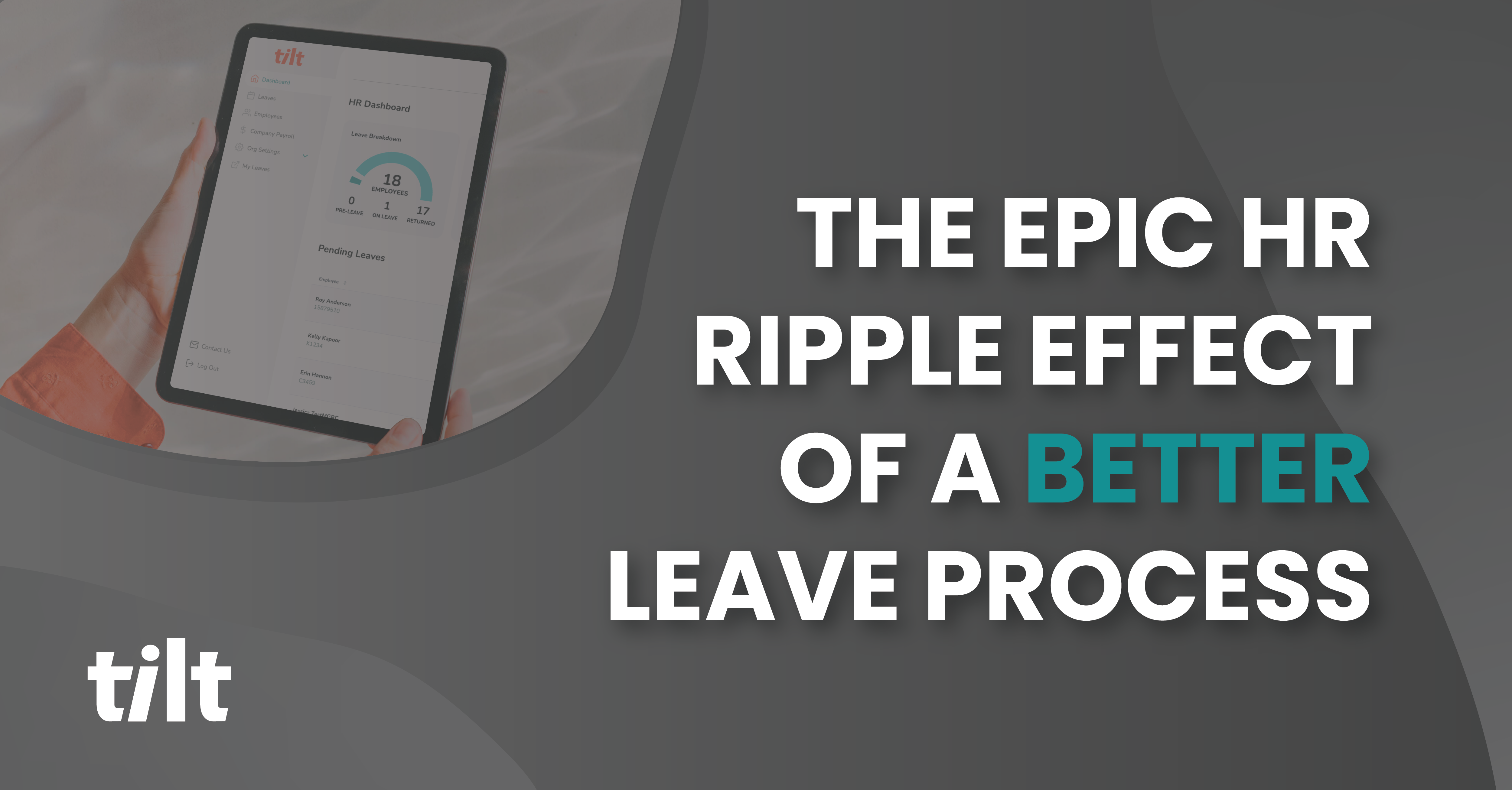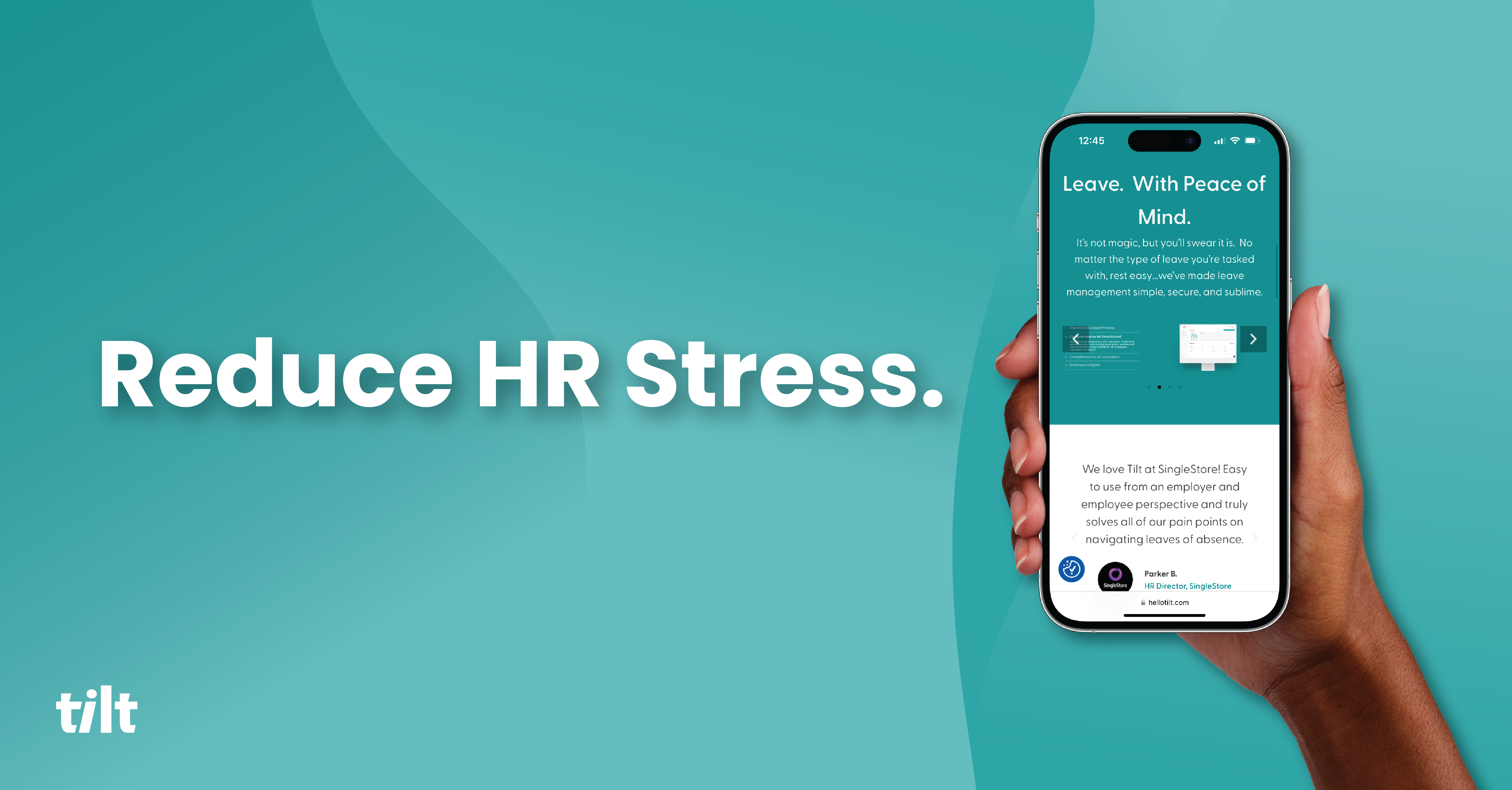Whether you’re trying to avoid costly lawsuits, improve your employee engagement and retention, or simply trying to be a good supportive human and colleague, successfully navigating a leave of absence can be a tricky endeavor for both HR and employees alike.
Why is that?
It’s partially due to every leave of absence involving a unique individual in a singular situation, no two leaves are alike because of it, and it’s partially due to the complicated process of administering the leave in combination with the confusing steps and requirements the employee has to navigate along the journey.
With ever-evolving leave law legislation to adhere to and clunky, manual processes at your disposal, the cards may not be stacked in your favor to provide the level of service your employees need, but by executing the functions below you can begin to stack your deck.
This is remarkably convenient because DECKS is the acronym these functions spell out…
D.ocumention
E.ducation
C.ommunication
K.indness
S.upport
Let’s dig in.
The Importance of Documenting Your Leaves of Absence
A supported leave of absence is a well-documented one. Proper leave documentation not only protects your organization in the event of a dispute or an audit, but it instills confidence in your employee taking leave that every request, any important files, and all key dates are being monitored and tracked securely and with accuracy.
As alluded to above, proper documentation ensures that the employer complies with relevant labor laws and regulations regarding the employee’s specific leave scenario. This helps protect the employee’s rights and ensures that the company follows legal requirements.
Documentation also provides clarity about the terms and conditions of the leave, including the duration, eligibility criteria, and any benefits or entitlements. This transparency helps the employee understand what to expect during their absence.
Well-documented leaves also facilitate a smoother transition back to work for the employee. It provides a record of the agreed-upon return date, any flexible work arrangements, and other details that can help make the return process more seamless.
When in doubt, document.
The Critical Role of Education in Employee Leave of Absence
Education might be the second item of the DECKS deck, but make no mistake, it may very well be the most important function for HR and People Ops pros trying to help an employee successfully navigate their leave of absence journey.
An educated employee population is a prepared employee population. And when it comes to leave of absence navigation, the more prepared your employees feel the more confident they’ll feel that they’re getting the support they need from your organization. Educating employees about your leave of absence process promotes a positive and inclusive workplace culture by demonstrating your organization’s commitment to supporting employees during significant life events.
Your education efforts can accomplish a wide variety of goals (like keeping managers from committing leave law violations…) and take many forms. A periodic lunch & learn to go over employee requirements and processes can keep leaves of absence top of mind while providing an online library of resources can ensure your policies are easily accessible, protocols clearly understood, and benefits information at the ready.
When employees understand their entitlements, rights, and available resources, they can better navigate the complexities of taking parental leave, reducing stress and uncertainty. This, in turn, contributes to improved employee well-being, mental health and productivity.
How Communication Comes in Clutch When Supporting LOAs
It’s not surprising that communication plays a critical role in leave of absence support efficacy, but it’s not just what gets communicated, it’s how it gets communicated, by whom, and when it gets communicated that matters.
Compassion is definitely in fashion when discussing LOA communication. Employees may be on leave due to personal challenges, additions to their family additions, or myriad health-related issues, making compassionate communication essential.
People Ops pros who convey empathy and understanding create a supportive environment, helping employees navigate their time away from work more smoothly. Regular updates and a willingness to address potential concerns promptly conveys your commitment to the well-being of your people.
Consistency is also important. You won’t always know when an employee communication crisis might pop up thanks to a leave of absence going sideways, but even still, consistent communication for all employee leaves is a must. Employees must not feel they are being treated unfairly, or differently than other employees, so delivering consistent support not only provides employees with peace of mind, but also keeps your organization compliant.
Where Kindness Plays a Role in Leave Management
It’s easy to get overwhelmed with supporting employees trying to navigate a leave. Between decoding the state benefit processes, filling out paperwork, figuring out accurate pay when there are shifts in leave dates, and communicating promptly when needed.
With everything that’s involved with supporting a single leave of absence, administering each leave with kindness can’t be overlooked. While kindness throughout the process is a must, let’s focus on one area of a leave that often gets overlooked, and that’s reboarding.
When an employee returns from leave, especially for an extended period of time, organizations must be particularly careful with how they are re-introduced into the workflow. As Tilt’s COO Kait Feeney puts it:
“Having a re-onboarding plan is very important, especially for those extended leaves when someone has been out for a long time. Just like you would onboard a new hire, have a plan for welcoming employees coming back from leave. "ICYMI docs," are helpful for when employees return so that they can digest in their own time and ask questions as needed. It isn't just this "hey, welcome back..." followed by overwhelming verbal diarrhea of all they missed while they were out.”
Kait Feeney, Tilt COO Tweet
Going the extra mile to treat employees with kindness can pay massive dividends for your organization and helps strengthen the relationship with your employee population as you are developing a sense of trust that if life goes sideways, your organization will help you transition away from work and back to work with kindness and care.
How HR Can Best Support Employees On Leave
At the end of the day, HR and People Ops teams are relied upon to facilitate and administer leaves of absence and in doing so must document, educate, communicate with kindness and ultimately be the support system for expert leave of absence in your organization.
Ensuring your processes are streamlined and clearly conveyed to your employees will make your life much easier and increase the level of service you’re delivering to your people when they need it most.
If you’ve read the above and realized there’s no way you or your team can consistently and effectively manage a leave of absence the way your systems and processes are currently constructed, you certainly aren’t alone and may want to consider stand-alone leave management solutions. If you’re worried about bandwidth, compliance, and level of effort for LOA efficacy, relying on experts to help support your people is likely the most economical and effective way to fully support your people when life pops up and a leave of absence is requested.
Sticking with the old way of managing leaves exposes your organization to compliance risks, leads to employee dissatisfaction, and its lack of scalability burns out HR pros like you with the quickness. And that’s no fault of your own, the sheer amount of administrative lift required to successfully track and support a leave of absence is tremendous.
Is it time to retool your processes or implement a modern tool for a modern world? Only you can answer that question, but if you’ve made it this far down this blog, you likely know the answer.
About Tilt
Tilt is leading the charge in all things leave of absence management through easy-to-use tech and human touch. Since 2017, our proprietary platform and Empathy Warriors have been helping customers make leave not suck by eliminating administrative burdens, keeping companies compliant, and providing a truly positive and supportive leave of absence experience for their people.







